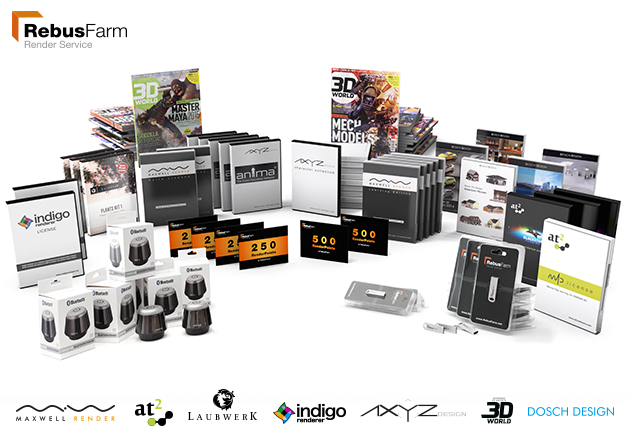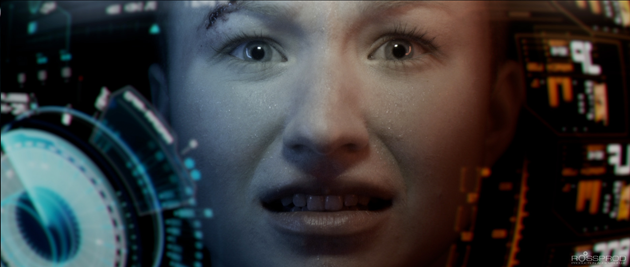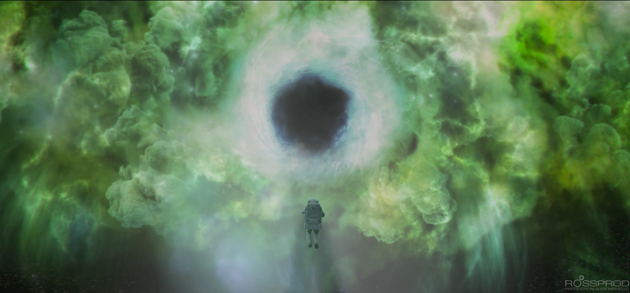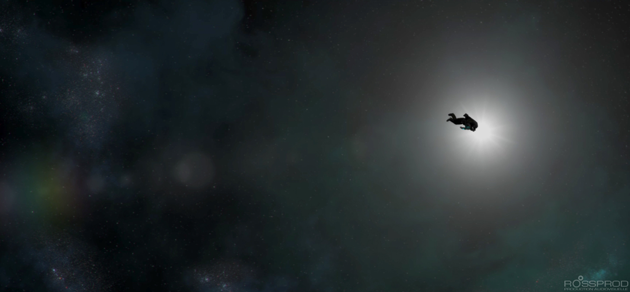Блог рендер-фермы
Добро пожаловать в блог Render Farm! Присоединяйтесь к нам, поскольку мы погружаемся в мир 3D, рассказывая об особенностях индустрии, подробных историях создания, советах экспертов, специальных предложениях и наших эксклюзивных функциях RebusArt. Вдохновляйтесь и расширяйте границы рендеринга вместе с нами!
RebusFarm meets Siggraph 2014!
Wednesday, July 9th, 2014 by Margarete Kitel
This year you can visit us at the Siggraph exhibition in Vancouver!
The exhibition takes place from August 12th to 14th in the Vancouver Convention Centre.
Visit us at booth 833 and get a 50€ voucher for FREE!
Take part in our Siggraph raffle and take your chance to win prizes to the value of approx. $16.000!
Check out the prizes here:
We are looking forward to meet you!
Quickly to Venice – Animated Video
Friday, May 30th, 2014 by Margarete Kitel
Take a look at this great 3D animation video, a project of the 3D Artists Guido Pagotto and Giovanni Grauso of the company Claim.
They used Autodesk Maya with Maxwell Render for this project. One Frame needed about 45 minutes to render on their local machine, so the 2500 frames of this project would have taken approx. 78 days to get rendered locally. Due to the use of RebusFarm it was rendered within one day.
Giovanni and Guido created this video for a new transport service in Italy, which provides transport to Venice. It's a lovely, good mood video with an extraordinary look, that invites you to escape briefly from daily like. Take a look and enjoy!
RebusFarm wants you!
Thursday, May 15th, 2014 by Margarete Kitel
RebusFarm is constantly expanding and therefore we are looking for qualified employees, who wants to join our team.
Online Supporter / Render Wrangler
Responsibilities:
- customer support via phone, mail and chat
- Troubleshooting of render jobs
- supervise the processing of data
- Maintenance of hardware
We are looking for:
- 3d Software skills (V-Ray and Mental Ray should be known)
- good language skills in english and german
- Technical skills and interest
- independent working
- Third language (optional)
- Programming skills (optional)
Web Developer / Web Designer
Responsibilities:
- Manage the ongoing design/development of www.rebusfarm.net
- Creation of new site layouts and user interfaces
- Routine daily maintenance of existing site
- Introducion of new techniques i.e. responsive pages, etc.
We are looking for:
- 5+ years of experience as a Designer/Developer or related role
- 5+ years of exposure to Web-based technologies HTML5, MySql, JavaScript, CSS/CSS3, PHP, node.js, etc.
- optional C++, vbscript and Qt
- good language skills in english and german
- Experience with SEO techniques/strategies, analytics and content management
- Online portfolio of website, mobile and/or tablet experiences (examples required)
If you think one of the above described positions are a job for you and you would like to become a part of our team, please send your detailed CV in electronic form to Этот адрес электронной почты защищён от спам-ботов. У вас должен быть включен JavaScript для просмотра.
Reviewing the Movie 'ENTITY'
Monday, April 14th, 2014 by Margarete Kitel
One minute after a technical failure of her spacecraft, an astronaut finds herself ejected into space from her cockpit. She tries to contact the base to obtain help...in vain.
A horror vision that everybody has probably thought about. The movie „ENTITY“ shows what could happen in such a situation, with dramatic scenes, amazing animations, special effects and of course a fantastic view out of space.
ENTITY was directed by Andrew Desmond and produced by ROSSPROD, a French production company founded by Frédéric Rossignol and Laurent Fumeron, specialized in short films. They are currently developing feature films that are in pre-production. ENTITY was rendered at RebusFarm.
It is the first French short film mixed in Dolby Atmos. It is currently selected in 8 festivals since February and has just won Best VFX at the Hollywood Horror Fest in LA. In the following interview you will find out more about the creation process of this movie.
We asked Laurent Fumeron about the work that has been put into this movie:
What was the idea? What was the process of forming the idea?
“Andrew Desmond and Jean-Philippe Ferré started this project two years ago with the will of doing a small SF movie taking place in space, that would be 5 minutes long and really fast to do… Then we started working on it and… it took us a little bit more time :)”
How long have you worked on this project?
Overall we worked on Entity for 2 years, from the idea to the delivery of the film. Jean-Philippe our VFX Supervisor did a full previz of the film before the shooting that took place 1 year ago. We shot in a studio for 2 days filming only the face of Alias, our actress. Then It took us one year to do the editing, VFX, conforming, color grading, music and sound effects. It was a very challenging project!
Tell us something about the rendering process, for example how long was the rendertime?
I don’t remember how much frame we rendered but quite a lot.
2 shots of the spaceship (around 1000 frames each) and 30 shots of the astronaut (from 100 frames to 1500 frames) For the first shot of the film, I calculated that on our machine it would have took 25 days to render (without crashes of course) and It render in about 30 minutes on rebus farm.
For us it was really helpful, the longer part was the download process as we used multi passes render but rebus farm made it possible for us to deliver the film on time. If not we would not have done it. I was very happy about it especially because we were working with my team in two different locations and we could launch the render from one place and download it for the other which also saved us some valuable time.
Tell us some technical details/ Which software was used?
Our workflow was very complex. We shot the film in 4K using the Sony F65 that we processed in Linear Aces.
When we started working on the previz before the shooting, we worked in RGB so we had to put everything back in Linear which was quite a lot of work to get the result we wanted.
All the compositing work was done in After-effects. For the 3D shots we used different software’s: The Spaceship was done in C4D using VRAY for rendering and the astronaut was created in 3DSMAX also using VRAY. We composited everything back in After-Effects. Then when all the CGI were finished we rendered each shot in several layers to send it to our partner Technicolor for conforming and color grading. This technique allowed us to have great flexibility but was very intense as we had so many layers to work on! We used Smoke and Lustre for this final stage which was particularly helpfull as the two softwares work well together!
What was your biggest challenge during this project?
Everything was quite challenging on this project! Our team was very small so it took us a lot of time and as we’re very meticulous we wanted everything to be perfect.
Also when we started the project we worked in After-effects for the previz and as Jean-Philippe did some really nice looking shots in it and was in an advanced stage we decided not to change our workflow. Going back to Nuke would have made us waste a lot of time. That was also a challenge because I think we pushed AE to the maximum of its capabilities specially in term of 2D compositing.
A big thank you to ROSSPROD for taking the time to give us this interview and good luck for upcoming competitions !
3D Artist of the month march
Thursday, April 3rd, 2014 by Margarete Kitel
We are happy to present to you our newest Artist of the Month: Ingus Rinka!
For creating his winning image, he used 3ds Max with V-Ray and did the post production in Photoshop. Ingus has over 9 years experience as a designer and visualizer.
Congratulations Ingus Rinka!
Check out his webside: www.irdizains.lv
Sadly this is our last Artist of the Month edition for now. We are going to have a break. But if you have some great work to present, do not hesitate to post it on our facebook wall.
The break won't be forever - so keep your eyes open for the continuation of the Artist of the Month!
We will keep you posted.
3D Artist of the month march
Thursday, April 3rd, 2014 by Margarete Kitel
We are happy to present to you our newest Artist of the Month: Ingus Rinka!
For creating his winning image, he used 3ds Max with V-Ray and did the post production in Photoshop. Ingus has over 9 years experience as a designer and visualizer.
Congratulations Ingus Rinka!
Check out his webside: www.irdizains.lv
Sadly this is our last Artist of the Month edition for now. We are going to have a break. But if you have some great work to present, do not hesitate to post it on our facebook wall.
The break won't be forever - so keep your eyes open for the continuation of the Artist of the Month!
We will keep you posted.
Anima 1.6 release
Wednesday, April 2nd, 2014 by Margarete Kitel
AXYZ design announced the release of an(i)ma® 1.6, a new version of the fastest stand-alone crowd animation software with great new features in order to improve liveliness and dynamism in scenes.
Check out the new features of an(i)ma® 1.6!
We are proud to announce that an(i)ma® 1.6 is already supported at RebusFarm.
A big thank you goes to AXYZ for their cooperation!
3D Creation of the Musicvideo “Gyration“ by Camille Aboukhater
Tuesday, March 11th, 2014 by Margarete Kitel
We talked to Camille Aboukhater, who is a young 3D artist from France. He studied architecture and during his studies, expanded into CGI, which he used in the Video we are talking about in this interview.
The song “Gyration” is made by Ryan Davis and extracted from the album “State of Mind” released on Traum Schallplatten (Traum 169)
Camille, did the artist give you a concept for the music video?
“There was no concept at all! I was asked to do whatever I want. Neither the artist or the label had any idea of what they wanted for this film which was required to promote Ryan Davis' new album on the internet.“
What was your idea for this video?
“The idea was to illustrate the “gyration” notion the most abstractly by making evolve visual rhythm and visual intensity with the music."
How long did you work on this project?
“From conception to rendering, this film was produced in 6 weeks.”
Could you tell us something about the rendering process?
“There was over 8600 frames to render (6min / 24fps)
Average render time per frame : 8 min on my 6core i7 (3930K)
Thanks to Rebus Farm this took only a few hours!”
Which software did you use?
“Everything was modeled and animated in Cinema 4D R13. The renderings were made with VrayForC4D on Rebus Farm. Post production with Adobe After Effects, editing in Premiere.”
What was your biggest challenge during this production?
“Being a 6 minutes video, which is very long, I wanted to concieve the visuals as a film with a sort of narration, to make it easy to watch. I was trained as an architect, and I learned CGI mostly by myself during my studies. I had always work until this on architecture visualisations, or architectural concepts. It was the first time I ever worked on pure motion graphics. So it was very challenging for me to create such evolving abstract forms, trying to retranscribe visually what I feel when I listen to this music!”
This isn't your main field, what interested you in doing this music video?
“I love electronic music since I was a kid, and I've always been very sensible to Ryan's music. It is very rich, powerful, and finely composed. This composition in particular is very progressive, it evolves slowly to reach a harmonic climax driven by energic basses. The multi-layered melody he created in this music was my main focus for this film. I tried to draw all this complexity and those layers with evolving and fragmenting alive-like forms, this to amplify the emotions brought by the music.”
Camille thank you for your time it was very interesting to see what's behind the curtain of your work.
To see more of Camille Aboukhaters project check out this:
https://vimeo.com/user13941619
http://www.behance.net/leBouk
3D Artist of the month feb
Monday, February 3rd, 2014 by Margarete Kitel
We are proud to present our new winner of the Artist of the Month competition on facebook.com/RebusFarm.
The winner is Kami Ali!
He works with an Interior Designing Company and his winner Rendering is one of his recent Projects.
The architectural plan hw created with AutoCAD, for the further composition like extrusion, detailing and rendering he used 3ds Max with V-Ray. The Post Production was made in Photoshop.
Congratulations Kami, all this work was worth it!
Check out his webside: www.inncreation.com
If you want to be our next winner in the upcoming month March, just visit our facebook.com/RebusFarm page, upload one of your self-made 3D images and send us a personal message with your email address. We'll choose the best image and will contact the winner. The next deadline is March 26th.
Good luck to all of you.










